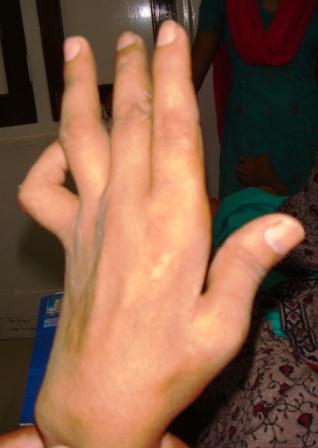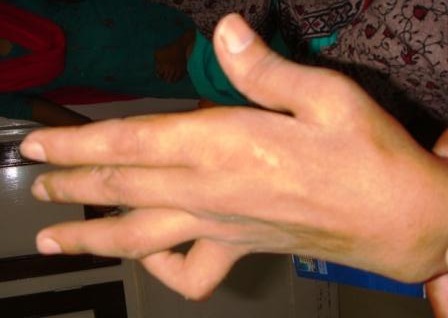
Arthiritis affects over three hundred and fifty million people worldwide and is one of the most common diseases in the world.
When most people think of arthritis they usually think of people’s hand.
(At least, I know I do); but did you know that the most common part of the body affected by this disease is the knee joint?
The arthritic condition of the knee can arise as a result of three different forms of the disease namely, osteoarthritis, rheumatoid arthritis and post-traumatic arthritis.
Osteoarthritis, Rheumatoid Arthritis and Post-Traumatic Arthritis
Osteoarthritis arhtirits is most commonly observed in people belonging to the middle or older age groups and is a slow degenerative disease which gradually wears away the joint cartilage.
Rheumatoid arthritis, on the other hand, is a condition that can affect any age group, and can completely destroy the joint cartilage.
Finally; post traumatic arthritis is an arthritic condition that normally manifests itself after years of a knee injury, such as, a fracture or meniscus or ligament tear.
Developing Pain
Generally speaking knee pain develops gradually; however, the sudden onset of pain cannot be ruled out either.
Any patient suffering from arthritis of the knee may experience swelling or stiffness of the joint,
which makes it difficult to straighten or bend the knee.
This swelling and pain becomes worse at the time of morning, or more generally, after a phase of inactivity.
As against this, one may also experience severe pain after activities, such as, stair climbing, kneeling or walking.
In some cases, weather changes may also affect the degree of knee pain and can also make suffers feel weak, resulting in the buckling or locking of the knee joint.
Professional Consultation and Diagnoses
In case a person has been suffering from intense knee pain since quite a long time, it is highly advisable to consult a doctor as soon as pain starts to develop.
In some cases, where the doctor may not be sure with regards to the exact cause of knee pain, he might ask you to undergo some basic tests.
Usually an X-ray examination is conducted which clearly shows a loss in the joint space of the knee affected by arthritic condition.
Rheumatoid arthritis is a little more difficult to diagnose.
Its presence can be established by conducting some blood tests or special imaging tests, like MRI (Magnetic Resonance Imaging).
Once it has been established that a person is suffering from an arthritic condition, appropriate treatment measures can be taken to obtain quick relief.
Adopting a Change of Lifestyle
Many doctors will also recommend a complete change of lifestyle in order to help manage your pain which usually include a specific exercise routines as well as a complete diet overhaul which is rich in vitamins, minerals and omega-3 fatty acids.
Research has also shown that calcium, vitamin D and iron have also shown to be very effective in helping to counteract arthritis pain.
It is also recommended to avoid alcohol and also reduce the intake of protein gained through fish and meat.
If you have any of your own tips to share for managing arthritic pain please feel free to leave them in the comments below.
Lee is a full time blogger and has first hand experience with arthritis.
If you or anyone you know are suffering please stop by at https://www.arthriticassociation.org.uk to see how you can manage your arthritis pain.

